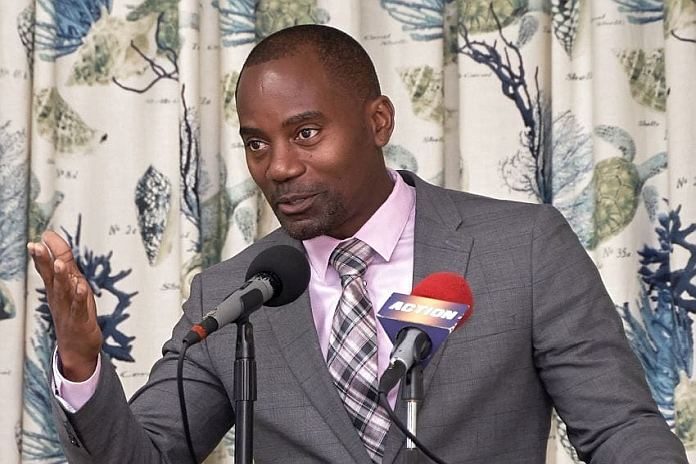By Julia Rawkins – Bentham
BRIDGETOWN, Barbados (BGIS) — Barbados’ young scientists are taking on the challenge to develop innovative products that can protect and maximize the potential of Barbados’ blue economy.
Plastic made from sweet potato skins, fertilizers made from fish offal, and biomethane gas made from Sargassum seaweed were among the projects on display when the United Nations Development Programme (UNDP) launched its Blue Lab at Copacabana, November 7.
Minister of Maritime Affairs and Blue Economy, Kirk Humphrey, welcomed the innovators with open arms, noting that “the future of Barbados is not with me or even with the government, it is with the young people. If Barbados is to go anywhere, we need to see, to hear and to feel them”.
He added that innovation had to become something real as several young people were doing transformative things. The minister stressed the need to create a space to transform not only Barbados, and the Caribbean, but the world, which was “hungry” for something new.
“The world has now come to the understanding that we cannot continue to treat to the ocean in the same way that we used to treat to the ocean. We have come to the realization that we cannot continue to dispose of garbage in the way that we have traditionally disposed of garbage; we have come to the realization that we cannot treat the fish or turtles in the same way that we have. To do that, we need new people bringing new ideas to the table,” he said.
Humphrey commended the UNDP for the Blue Lab, noting that it was their way of creating a space for the vision for young people to be heard and felt, and also to fit into the type of partnerships that were necessary for the transformation of Barbados.
However, Humphrey said there was a need to deepen existing partnerships and bring new players to the table; added that his ministry was presently working with the UNDP on a scoping study to “fine-tune” what was the way forward. Besides, the government of Barbados is working with a university in Canada to use robotics to view what is happening on the ocean’s floor.
Head of the Blue Lab, Nikola Simpson, stated that it was a part of the UNDP’s Accelerator Labs programme, and part of a three-year project covering Barbados and the Organisation of Eastern Caribbean States (OECS) countries.
Final year Chemistry student at the University of the West Indies, Kerri-Ann Bovell, explained that her research project was designed to transform sweet potato skins to plastic, as part of her degree requirement.
She said that she extracted the starch from the sweet potato skins, and added acetic acid, glycerol, and distilled water. Then, she heated the mixture until it “came together” and poured it into bowls and allowed it to cure at room temperature. “This plastic can be used for non-food packagings such as in the cosmetic industry and household items,” she said.
Founder and chief executive officer of Red Diamond Compost, Joshua Forte, explained that his business was targeted at moving fish offal, and transforming it to nitrogen-rich fertilizer.






Great write-up, I am regular visitor of one’s web site, maintain up the nice operate, and It is going to be a regular visitor for a long time.